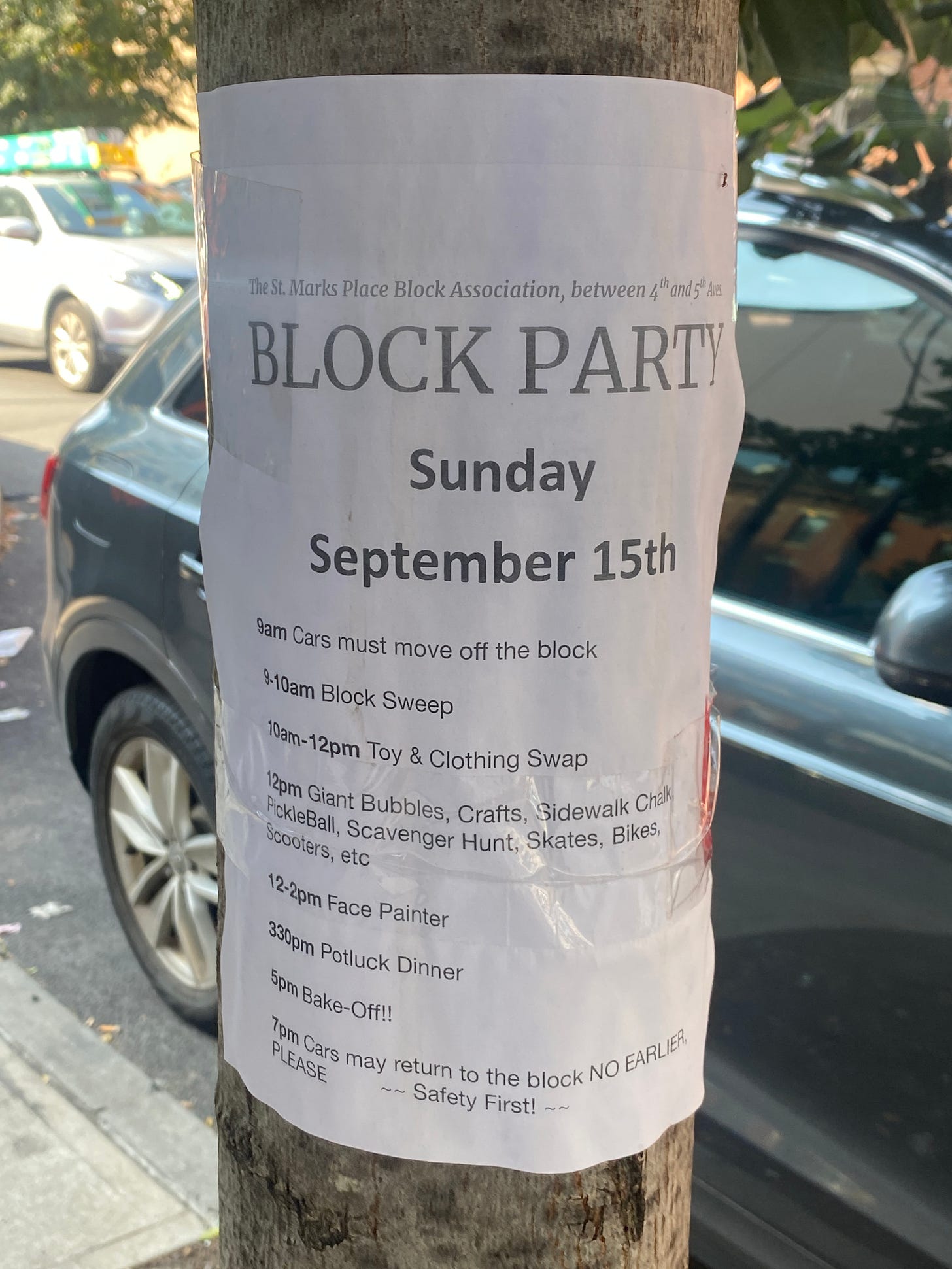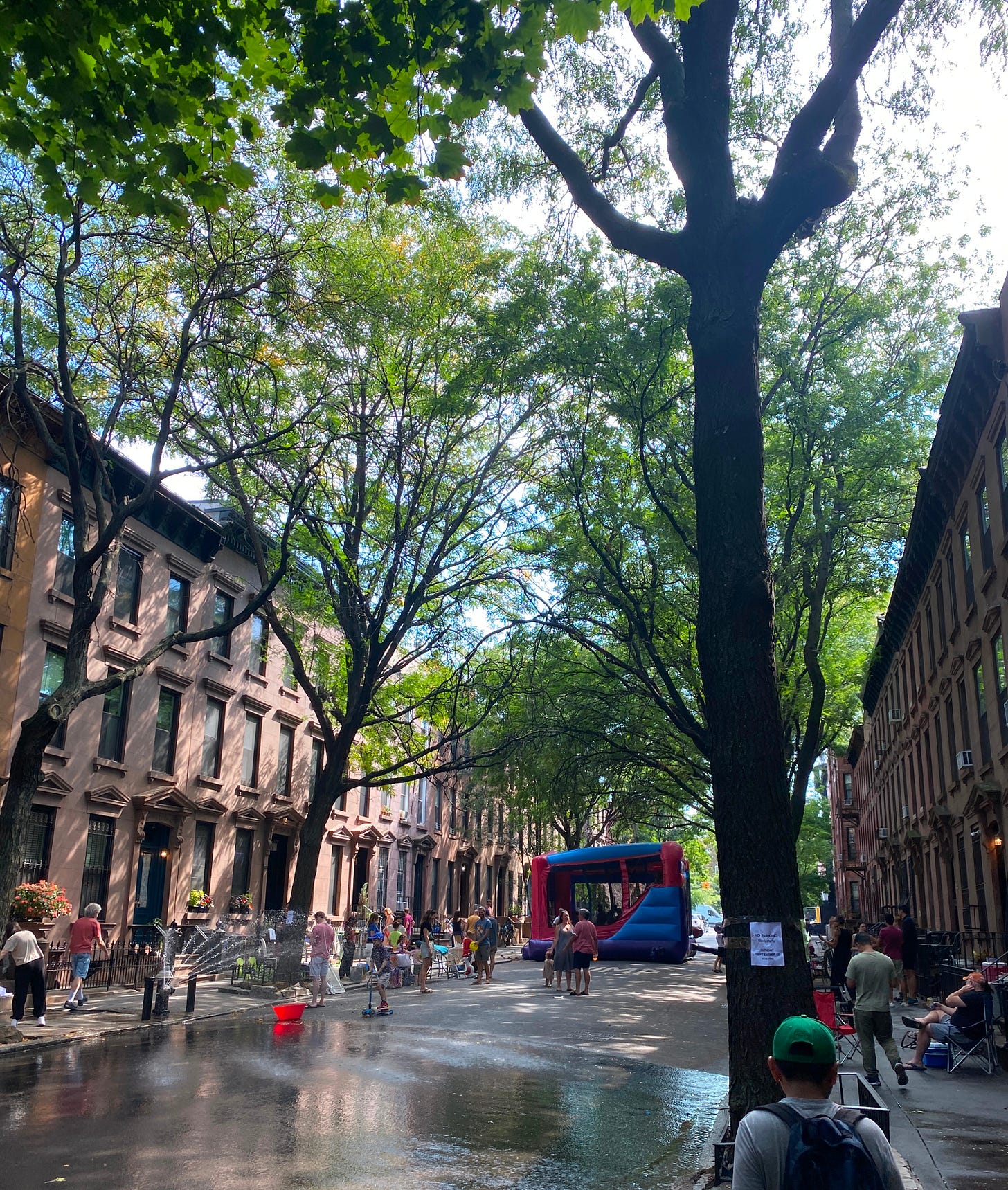The Modern Block Party
Turning street into a public space for music, food and laughter
For many, hot summer days call for picnicking with friends out in parks or sharing drinks on a rooftop, tied together with delicious food and local music. But even more iconic for many that grew up in the city is the neighborhood block party. Most people had no backyards and had limited space in tiny sweltering apartments.
So in droves, people push out to the concrete streets, taking to the blocks with lawn chairs and inflatable pools, decking out the road with folding tables to chit chat, play cards, and eat. Stages are set up for people to play live music, with sounds of children playing and meat sizzling on grills in the background. Dancing, skateboarding, laughter; everyone transforming a space meant for cars to be for people instead.
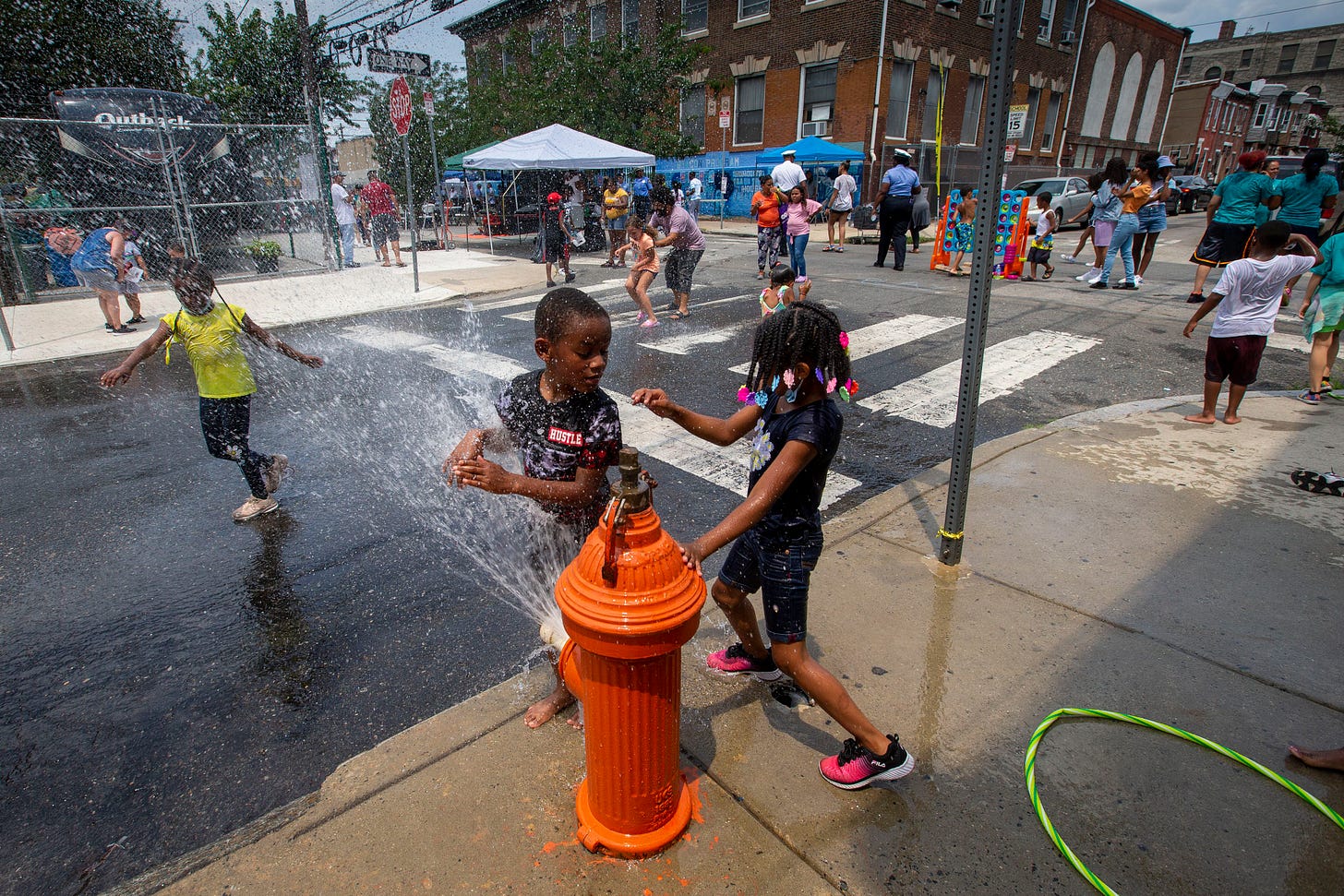
Community gatherings out on the streets started rapidly growing in popularity across cities around the U.S. in the 20th century, from NYC to Los Angeles, Detroit to Atlanta, with roots going all the way back to the 1860s. Before long, chatting on stoops with your neighbors matured into a full on block party: a space to bring people together, sometimes for a celebration or a cause, but most often to hangout and have some fun.
You can often find people of all ages and of all cultures at block parties across the city. People celebrate their birthdays, a marriage, a graduation, a new job — anything to make an occasion out of. During times that can be quite divisive, groups made sure that was different out on the street.
How did the block party get started?
Block parties started off as a place for communities to take advantage of the place they lived, as a space of possibility and free expression. Most attribute the modern block parties in NYC from the communities in the East Side, celebrating neighborhood soldiers coming back from World War I.

According to Fath Ruffins from the Smithsonian’s National Museum of American History, a renaissance of Black working class culture also sparked these social outdoor events, due to the Great Migration with Black folks escaping racial violence from the Jim Crow south.
“This is the era in which jazz is becoming a national and international music. This is the era in which a lot of Black firsts are being made, new Black newspapers are being established…In urban areas, particularly where Black people could control, or could dominate segments…you begin to have rent parties and block parties, because you have to have some density in the block to have a block party.” — Fath Ruffins
Other times parties were hosted by the local church to give sermons and raise funds for community initiatives. Other groups transformed gangs into community organizations to speak out politically, redirecting frustrations into creating music at their Friday block parties. Sometimes health clinics and local nonprofits set up tables for specific initiatives. But all do it in an effort to serve and support the neighborhood.
Much of the roots of this spontaneous outdoor conservatory also gave rise to hip hop and rap, allowing for rookie artists to practice their skills and bring people together, with systems pumping out soul, funk, disco, etc. Many attribute the hip hop’s tie with the block party starting because of Cindy Campbell and DJ Kool Herc in the 1970s, who threw a party to raise clothes for children in the upcoming school year. It quickly began to migrate out of NYC to other majorly Black cities like Baltimore, Atlanta, D.C. and Detroit.
Cheryl Keyes, the African American studies department chair at UCLA and author of the first history of rap, says that DJs would set up their systems, plugging turntables into streetlights, and learn how to work the crowd, a group different than in the club. Before it became more widely available to record tracks, street parties were the place to go to hear live musical performances, where an MC would spit freestyle rhymes.
What are block parties like today?
As they began to grow, block parties became less and less informal, with many districts and municipalities requiring a city permit with the Street Activity Permits Office. NYC started collecting records of block parties in 1999, with a majority of them counted in Brooklyn.
But in the last 10 years, the number of permits has dwindled, which could be because more people are having block parties without permission from the city or because less blocks are throwing them.
The NY Times put out a piece a few years back talking about the change in block parties as new faces move in every year. Yet they are still optimistic about block parties as a place for New Yorkers to meet each other out from their towering apartments, even having survived through the pandemic.
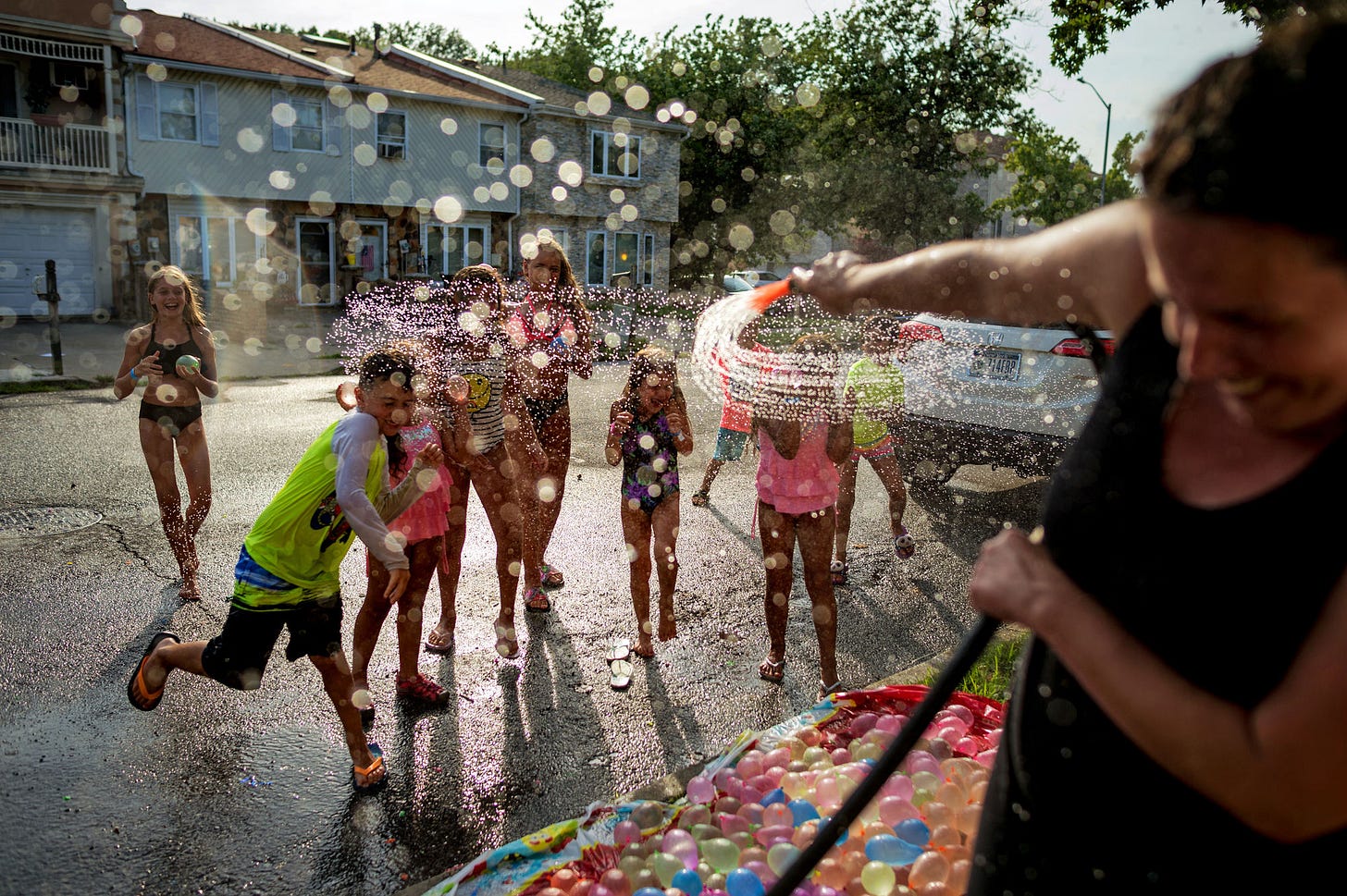
Miles Lewis with MIC put out an article talking about his experience with block parties, talking with DJs like DJ Brian Henry to understand what makes it so appealing. “So often, in nightlife scenes, it’s all about the cool factor. But the cool factor takes away the fun.” He finds that DJing out on the block bring back what made him fall in love with his work in the first place.
A quick search on Youtube or Tiktok shows that block parties are still being thrown every week, with many passed around by word of mouth meant for neighbors and friends.
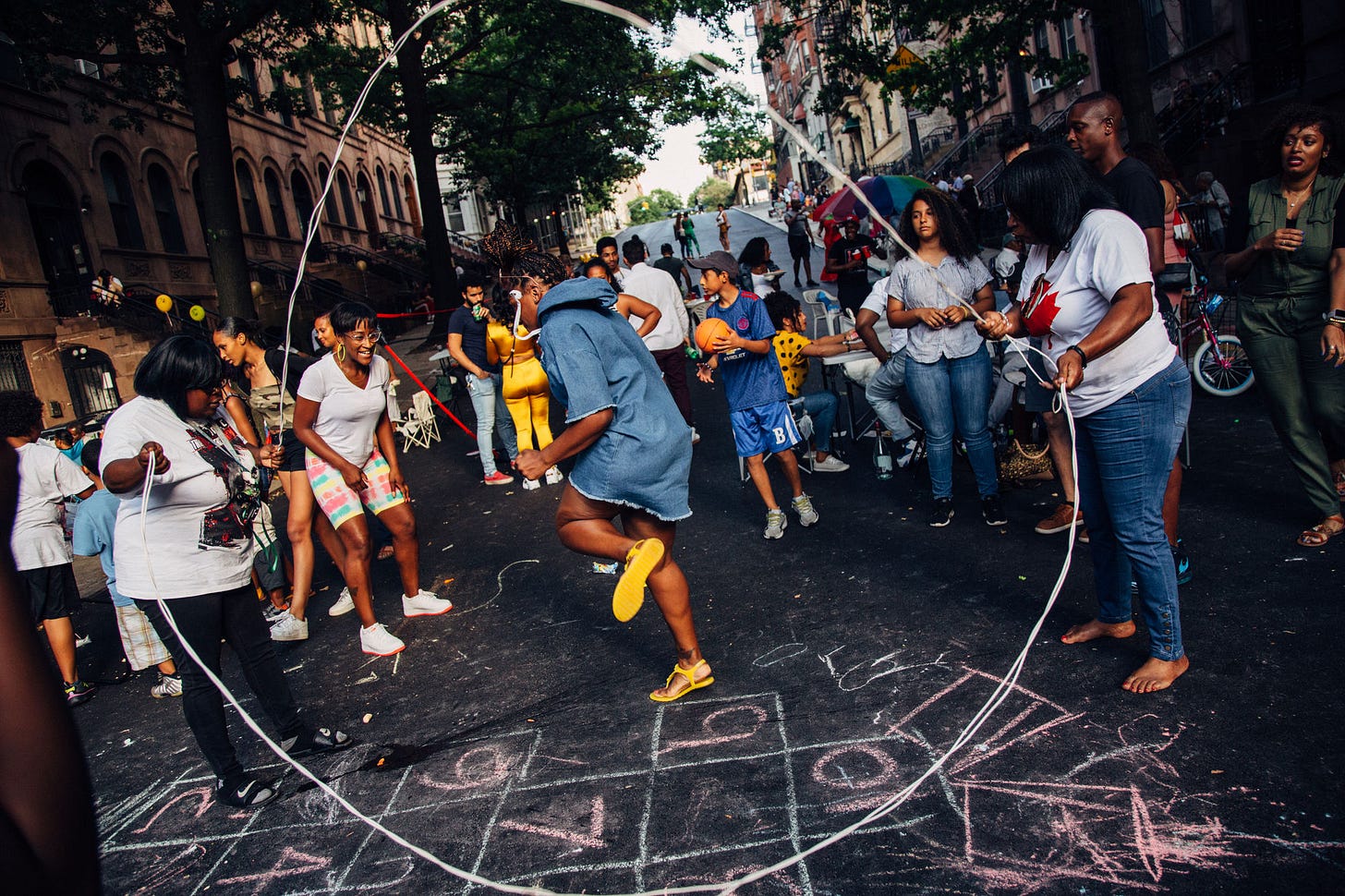
But block parties are a unique event meant specifically for people in their neighborhoods, and not just for tourists to meander on through. They are great examples of the growing movement to reclaim the roads back for the the people that live there, as mixed public common spaces that can be used for a variety of activities and not just as the exclusive domain of cars. They support local businesses and create chances for neighbors to connect in a safe space right where they spend their day to day lives, breaking down walls and barriers that can come about in our anti-social online lives.
Of course, a block party is only one version of a whole line of social outings. There are lots of social gatherings out on the public street including street fairs, night markets, cultural festivals, parades: all have the makeup of what constitutes a great block party, where streets are blocked off for people to have a good time. And there’s definitively no shortage of them.
Update as of Sept 16th.
Over this past weekend, I had the chance to participate in my own Block Party around the corner, which was great fun to meet with neighbors and have friends over. The sun was out, the fire hydrant let go, and the bouncy house inflated. Lots of kids ran around the block as lawn chairs got set up next to stoops for adults to chit chat.
I brought out a set of glasses and a bottle of wine, and read for a bit, with my girlfriend chilling in the seat next to me.
So if you’re in NYC and you’d like to create your summertime street celebration, here’s a guide to help you get started for your street.



